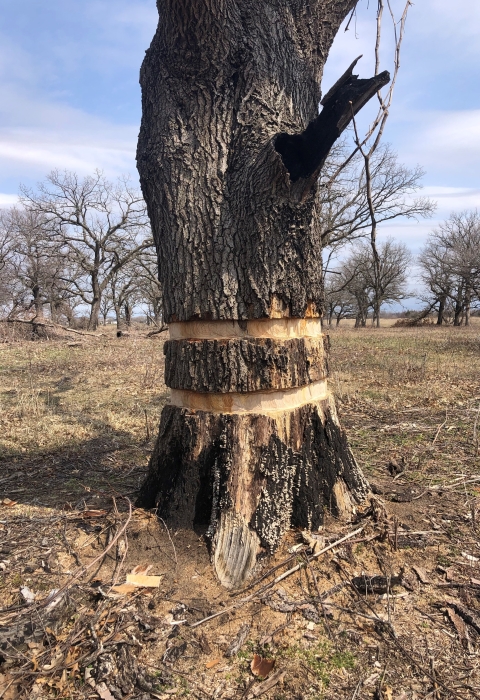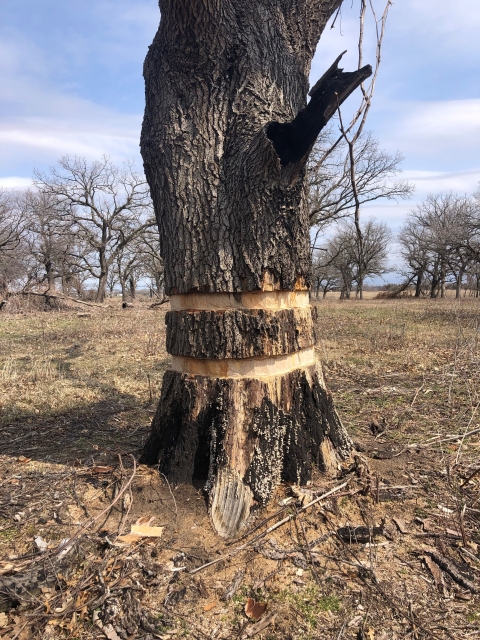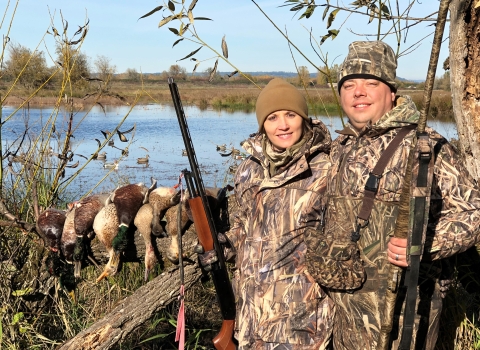As part of the ongoing oak savanna restoration project at Minnesota Valley National Wildlife Refuge, we have been girdling pin oaks in the area. Girdling involves cutting or removing bark around the entire circumference of a tree to disrupt nutrient transport and tree growth. This commonly used tree removal method kills trees without cutting them down.
Why Pin Oaks?
Many of the burr oaks on our restoration units are estimated to be over 100 years old and are irreplaceable. Burr oaks are slow growing, very shade intolerant and do best when there are no other oak species around.
By thinning out pin oaks, we decrease plant competition, as they are fast growers and will shade out herbaceous prairie plants and burr oak seedlings. An oak savanna needs low density of oak trees that allows for grasses and flowering plants to thrive in this open habitat.
By removing tree competition, the burr oaks will grow healthily as their branches will have space to move outwardly and form broad, heavy crowns.
Girdling Creates Homes for Wildlife
Rather than remove the pin oaks completely, we leave them standing to create habitat for a variety of animals. As the girdled trees die, they become attractive nesting and foraging sites for woodpeckers. One species of interest is the red-headed woodpecker as they’ve faced a substantial decline in the last half-century in Minnesota, partially due to habitat loss. By leaving the pin oaks, we hope to attract this species as a breeding resident on the refuge!
Learn About another Habitat REstoration Tool: prescribed Fire





